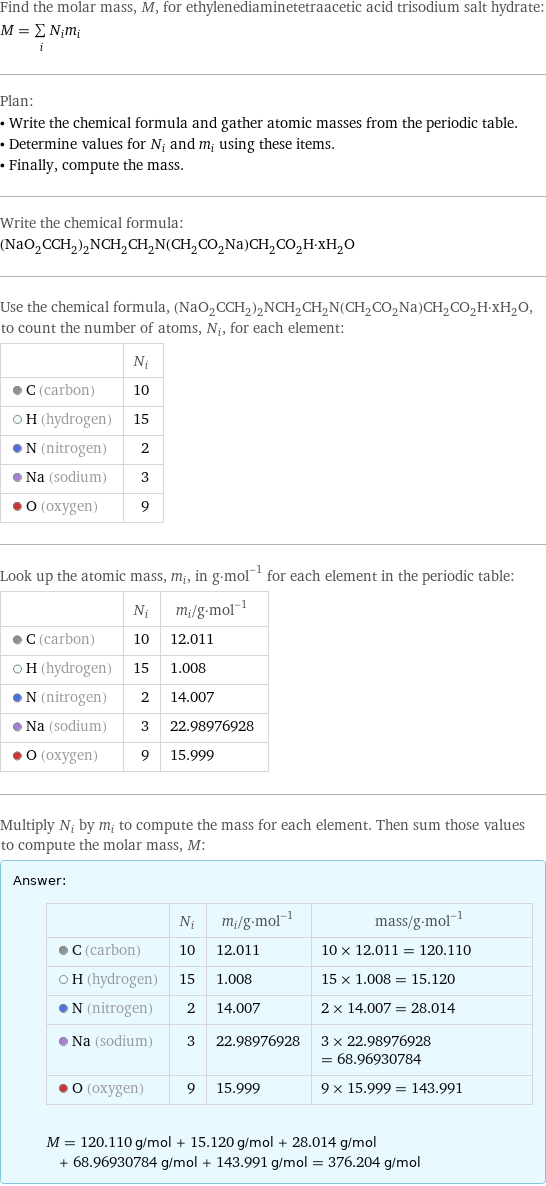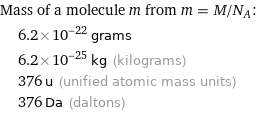Input interpretation

ethylenediaminetetraacetic acid trisodium salt hydrate | molar mass
Result

Find the molar mass, M, for ethylenediaminetetraacetic acid trisodium salt hydrate: M = sum _iN_im_i Plan: • Write the chemical formula and gather atomic masses from the periodic table. • Determine values for N_i and m_i using these items. • Finally, compute the mass. Write the chemical formula: (NaO_2CCH_2)_2NCH_2CH_2N(CH_2CO_2Na)CH_2CO_2H·xH_2O Use the chemical formula, (NaO_2CCH_2)_2NCH_2CH_2N(CH_2CO_2Na)CH_2CO_2H·xH_2O, to count the number of atoms, N_i, for each element: | N_i C (carbon) | 10 H (hydrogen) | 15 N (nitrogen) | 2 Na (sodium) | 3 O (oxygen) | 9 Look up the atomic mass, m_i, in g·mol^(-1) for each element in the periodic table: | N_i | m_i/g·mol^(-1) C (carbon) | 10 | 12.011 H (hydrogen) | 15 | 1.008 N (nitrogen) | 2 | 14.007 Na (sodium) | 3 | 22.98976928 O (oxygen) | 9 | 15.999 Multiply N_i by m_i to compute the mass for each element. Then sum those values to compute the molar mass, M: Answer: | | | N_i | m_i/g·mol^(-1) | mass/g·mol^(-1) C (carbon) | 10 | 12.011 | 10 × 12.011 = 120.110 H (hydrogen) | 15 | 1.008 | 15 × 1.008 = 15.120 N (nitrogen) | 2 | 14.007 | 2 × 14.007 = 28.014 Na (sodium) | 3 | 22.98976928 | 3 × 22.98976928 = 68.96930784 O (oxygen) | 9 | 15.999 | 9 × 15.999 = 143.991 M = 120.110 g/mol + 15.120 g/mol + 28.014 g/mol + 68.96930784 g/mol + 143.991 g/mol = 376.204 g/mol
Unit conversion

0.3762 kg/mol (kilograms per mole)
Comparisons

≈ 0.52 × molar mass of fullerene ( ≈ 721 g/mol )

≈ 1.9 × molar mass of caffeine ( ≈ 194 g/mol )

≈ 6.4 × molar mass of sodium chloride ( ≈ 58 g/mol )
Corresponding quantities

Mass of a molecule m from m = M/N_A: | 6.2×10^-22 grams | 6.2×10^-25 kg (kilograms) | 376 u (unified atomic mass units) | 376 Da (daltons)

Relative molecular mass M_r from M_r = M_u/M: | 376